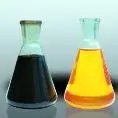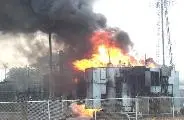SERVICES
Oil Analysis Program
Services
Oil Analysis can tell you what’s happening inside your oil. All machines, transformers, and gearboxes can benefit from a regular interval of testing.
Our lubricating oil analysis detects when components need repair. It is also an excellent machine condition detection method for early wear in the gearbox, motors, pumps, or transformer problems.

What Is Oil Analysis?
Oil analysis is the study of used oil samples to determine the condition of the machinery it came from. By testing oil, wear metals, contaminants, and additives can be detected, diagnosed, and monitored. This helps to extend oil life, reduce downtime and improve equipment reliability.

Why Perform Oil Analysis
While many practices within condition monitoring can help us evaluate the overall health of your vital assets we prefer oil analysis for the following reasons:
- circulating system and provides a means to sample many different parts of the equipment
- oil is in constant contact with metal surfaces and can pick up wear debris
- contains additives and contaminants that can indicate the health of the equipment
- breaks down over time and can provide an early warning for failure
At Failure Prevention we utilize oil analysis to detect wear metals, oil contamination, and additives in order to:
- To prevent unexpected equipment failure
- Prevent equipment downtime
- Reduce maintenance costs
- Increase oil life
- Schedule maintenance
- Detect and reverse machine wear
- Evaluate oil change
Types of oil analysis
Wear Analysis:
The main purpose of oil analysis is to determine the health of your equipment by analyzing wear metals, contaminants, and additives in the oil. By testing an oil sample, we can detect when components need repair, and monitor the overall health of your machinery.
Contaminant Analysis:
Contaminants can come from many sources, both inside and outside of your equipment. External sources include dirt, dust, water contamination, and fuel. Internal sources include wear particles, coolant, oil degradation products, and oil additives.
Additive Analysis:
Additives are added to the engine oil to improve its performance. The most common additive is a detergent, which helps to keep the oil clean by suspending contaminants in the oil so they can be removed during oil changes. Other additives include antioxidants, which help to prevent oil degradation, and anti-wear additives, which help to reduce wear on metal surfaces.
Interpreting an Oil Analysis Report
Oil sample reports can be confusing, but our experts are here to help. We will interpret the results of your oil analysis and recommend a course of action based on your specific needs. Our custom predictive maintenance programs are designed to keep your equipment running smoothly and prevent unexpected downtime. We provide onsite testing and training to better equip your maintenance teams with the tools needed to keep your business running.
Oil analysis is an important part of any predictive maintenance program. By testing oil, we can detect when components need repair, and monitor the overall health of your machinery.
Once we oil samples testing results, we will recommend a course of action that optimizes your machine’s performance, saves money, and improves efficiency. We will perform immediate maintenance if needed, then we will produce a custom predictive maintenance program that will ensure minimal downtime in the future while saving money.
It’s the little things you do that add up to Being Green…
Environmental issues are at the top of everyone’s mind. Not only is it good practice, but consumers are concerned that their companies are taking action to Be Green and environmentally sound.
You want your machines running at top performance and efficiency.

